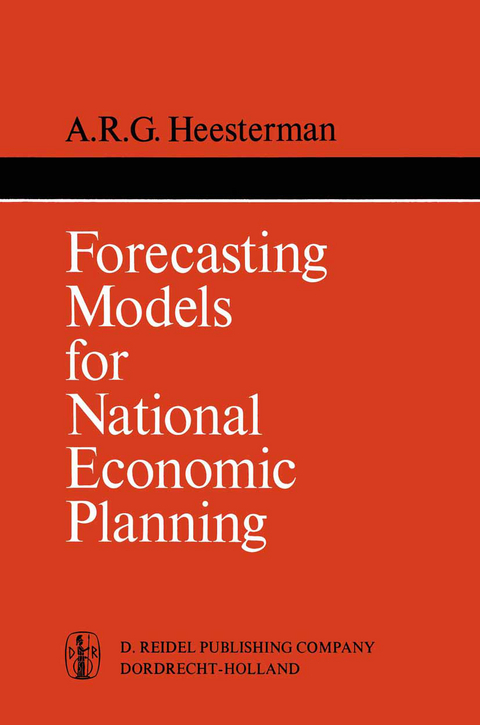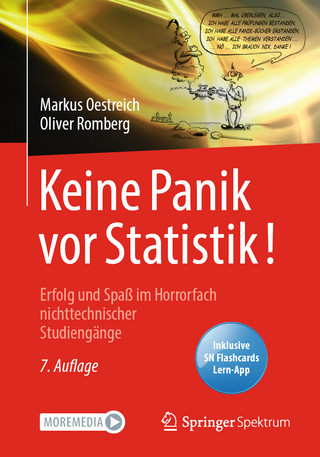
Forecasting Models for National Economic Planning
Springer (Verlag)
978-94-010-3141-7 (ISBN)
This book is about the specification of linear econometric models, and for this reason some important related fields have been deliberately omitted. I did not want to discuss the problems of parameter-estimation, at least not in any detail, as there are other books on these problems written by specialized statisticians. This book is about the models them selves and macro-economic models in particular. A second related sub ject is the policy decision that can be made with the help of a model. While I did write a chapter on policy decisions, I limited myself to some extent because of my views on planning as such. The logical approach to this problem is in terms of mathematical programming, but our models and our ideas about the policies we want are too crude for its effective utilisation. A realistic formulation of the problem should involve non linearities in an essential way, the models I consider (and most existing models) are linear. At the present state of econometrics, I do not really believe in such a thing as the 'optimal' plan. The possible result of bad planning or no planning at all, for instance massive unemployment, sudden financial crises, unused capital equipment, or the production of unsalable goods is agreed to be undesirable. Programming methods may of course be needed, if only for having a systematic algorithm to find a solution that avoids this kind of 'obvious' non-optimality. However, the main emphasis is on forecasting models.
Preface and Introduction.- Preface to the Second Edition.- I. The Basic Concepts of Linear Models.- 1.1. Economic Equation Systems.- 1.2. Some Conventions of Notation.- 1.3. The Basic Block-Equation.- 1.4. Some Types of Relations.- 1.5. The Nature of Stochastic Relations.- 1.6. Instruments, Target-Variables and Data.- 1.7. The Conditional Forecast.- 1.8. The Reduced Form.- 1.9. Subsystems.- II. The Short-term Forecasting Model.- 2.1. What is’ short-Term’?.- 2.2. An Example of a Short-Term Model.- 2.3. Linear Approximation.- 2.4. Production, Income and its Distribution.- 2.5. The Institutional Relations.- 2.6. The Demand for Production Factors.- 2.7. The Consumption Function.- 2.8. The Demand for Investment Goods.- 2.9. The Demand for Inventories.- 2.10. The Price Equations.- 2.11. Supply and Demand.- 2.12. Capacity.- 2.13. Built-in Stabilizers.- 2.14. The Use of Percentage Increments.- 2.15. Summary of the Short-Term Forecasting Model.- III. The (Static) Input-Output Model.- 3.1. Use of the Input-Output Model.- 3.2. The Input-Output Table.- 3.3. The Input-Output Production Model.- 3.4. The Matrix Formulae.- 3.5. Cumulative Input-Output Coefficients.- 3.6. Allocation under Capacity Limits.- 3.7. Artificial Sectors.- 3.8. The Input-Output Costing Model.- 3.9. Units of Measurement.- 3.10. The Requirements of Productiveness.- 3.11. The Generalized Input-Output Model.- 3.12. Regional Input-Output Models.- 3.13. History of Input-Output Analysis.- IV. Some Building Stones of Sectorized Models.- 4.1. The Extended Input-Output Model.- 4.2. Average and Marginal Input Coefficients.- 4.3. Stone’s Linear Expenditure System.- 4.4. Price-Based Substitution in Input-Output Models.- 4.5. An Input-Output System with Substitution and Technical Progress.- 4.6. Unequal Lags.- V.Capital-Output Ratios.- 5.1. The Harrod-Domar Model.- 5.2. Those Awful Data.- 5.3. The Role of Technical Innovation.- 5.4. The Computation of Capital-Output Ratios.- 5.5. In Defence of the Gross Ratio.- VI. The Dynamics of Economic Growth.- 6.1. The Dynamic Input-Output Model.- 6.2. The Accelerator Model.- 6.3. The Quasi-Static Model.- 6.4. The National Plan.- VII. Dynamic Adjustment Models and their Convergence.- 7.1. The Dichotomy.- 7.2. The Causal Chain.- 7.3. The Cumulative Forecast.- 7.4. The Long-Run Equilibrium.- 7.5. The Problem of Stability.- 7.6. The’ simple’ Long-Term Model.- VIII. Forecast and Policy.- 8.1. Data and Instruments.- 8.2. The Policy Programming Problem.- 8.3. Tinbergen’s Method of Instruments and Targets.- 8.4. Theil’s Quadratic Programming Approach.- List of some of the Tables and the Examples to which they belong.
| Reihe/Serie | International Studies in Economics and Econometrics ; 2 |
|---|---|
| Zusatzinfo | 166 p. |
| Verlagsort | Dordrecht |
| Sprache | englisch |
| Maße | 152 x 229 mm |
| Themenwelt | Mathematik / Informatik ► Mathematik ► Wahrscheinlichkeit / Kombinatorik |
| Wirtschaft ► Allgemeines / Lexika | |
| Wirtschaft ► Volkswirtschaftslehre ► Finanzwissenschaft | |
| Wirtschaft ► Volkswirtschaftslehre ► Makroökonomie | |
| Wirtschaft ► Volkswirtschaftslehre ► Ökonometrie | |
| ISBN-10 | 94-010-3141-X / 940103141X |
| ISBN-13 | 978-94-010-3141-7 / 9789401031417 |
| Zustand | Neuware |
| Haben Sie eine Frage zum Produkt? |
aus dem Bereich


